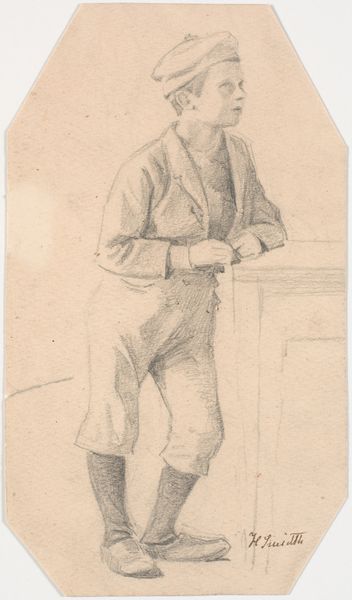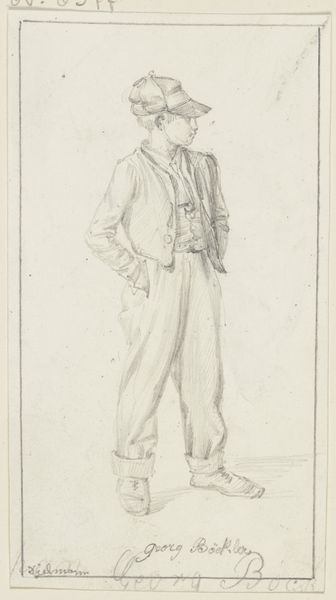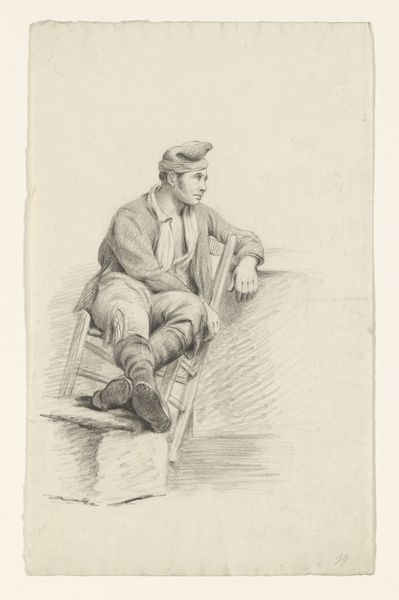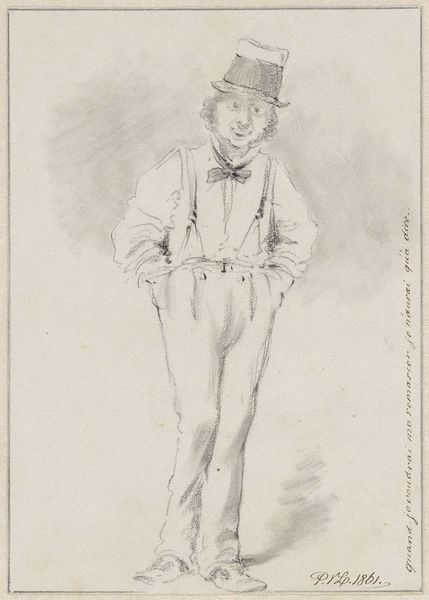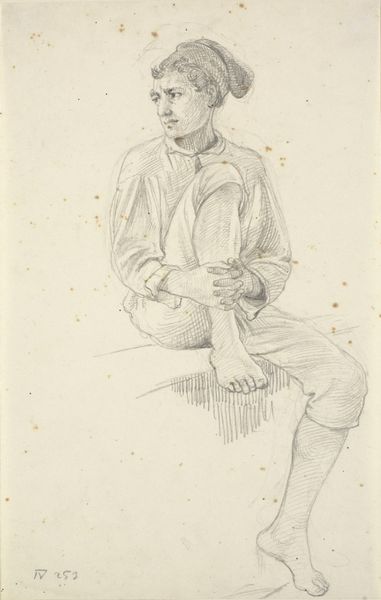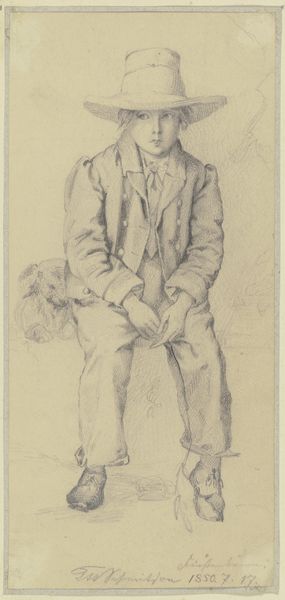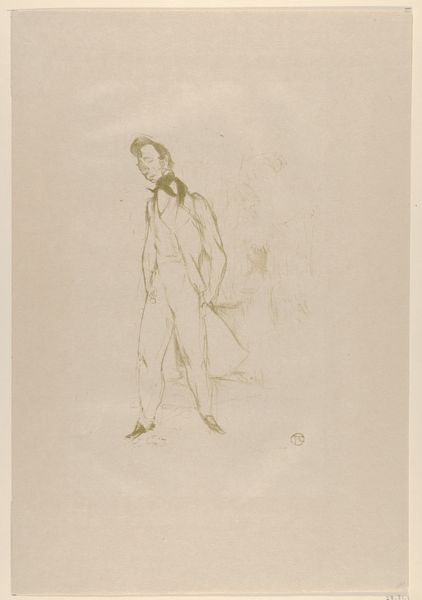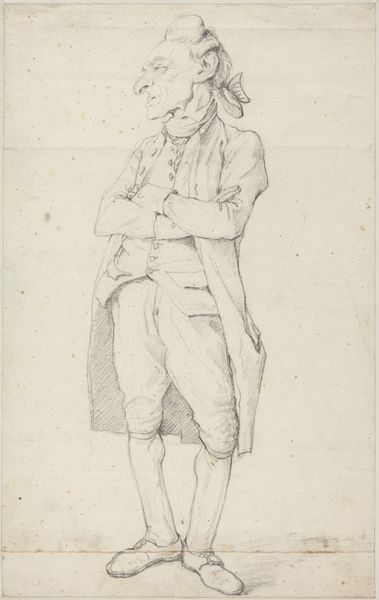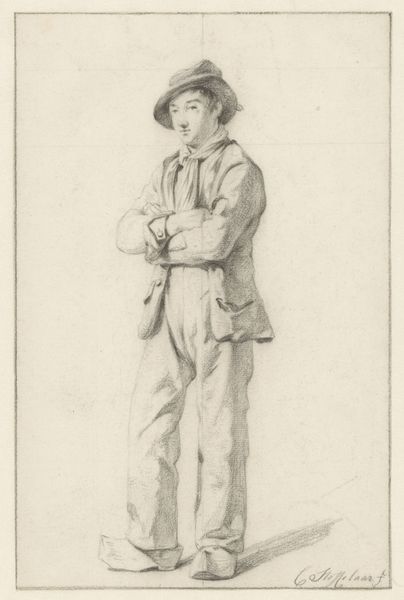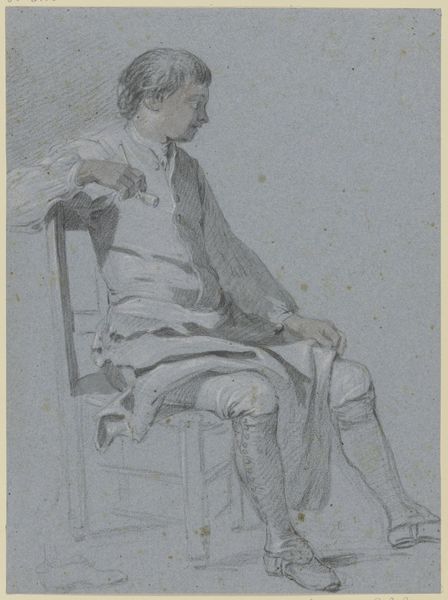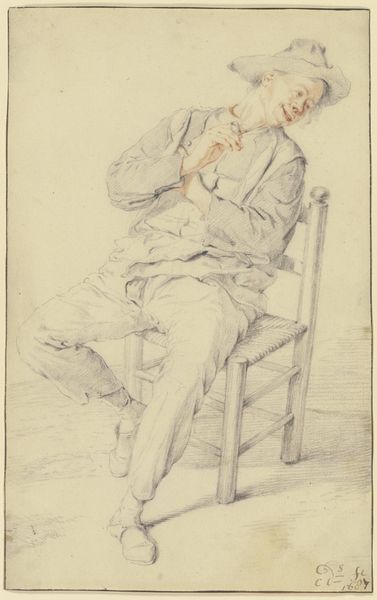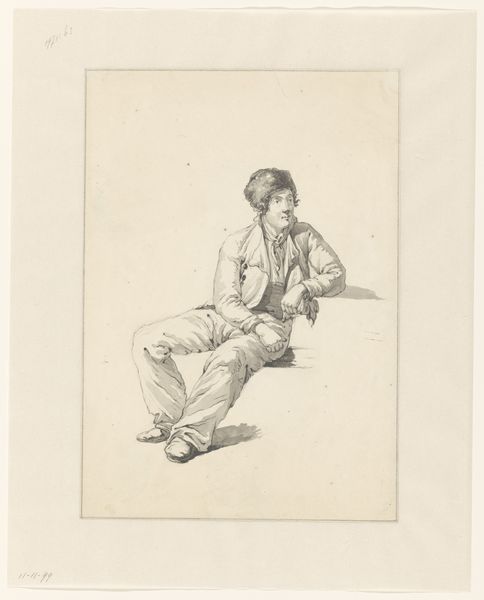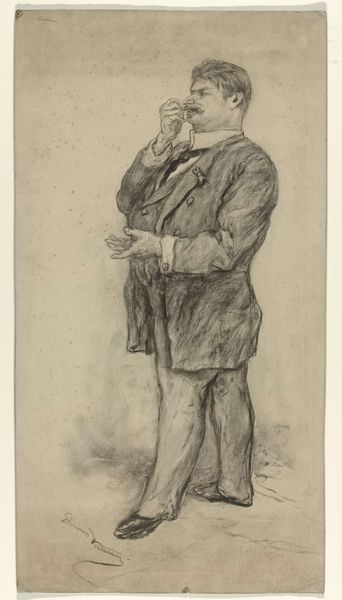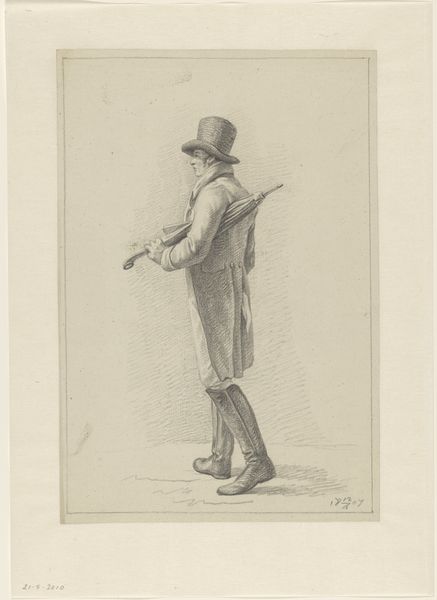
drawing, pencil
#
portrait
#
pencil drawn
#
drawing
#
pencil sketch
#
figuration
#
pencil drawing
#
romanticism
#
pencil
#
realism
Dimensions: height 503 mm, width 226 mm
Copyright: Rijks Museum: Open Domain
Editor: This is "Staande matroos," or "Standing Sailor," a pencil drawing from between 1809 and 1869, attributed to Alexander Cranendoncq and residing here at the Rijksmuseum. There's something about the casual pose combined with his upward gaze that feels almost romantic, and perhaps speaks to the ideals of that period. What stands out to you as you look at this drawing? Curator: Well, placing this drawing within its historical context reveals interesting layers. Consider the romantic era in which it was created. How does the depiction of the sailor engage with, or perhaps subvert, contemporary ideas about the working class and the "noble savage"? Is he a celebration of working-class heroism or something else? Editor: Subvert, how so? I find him quite elegant. Curator: Notice how the artist chooses to portray him – not engaged in labour, but leaning pensively, almost posing. Does this aestheticized representation serve to elevate the sailor, or does it perhaps sanitize and distance him from the realities of maritime life, aligning the imagery closer to contemporary Romantic ideals acceptable to bourgeois patrons of the arts? Think of how the rise of colonialism shaped perceptions and representation of different people and classes. How does this drawing, shown in a museum today, take part in that complicated historical conversation? Editor: That’s fascinating. So the simple portrait is a much more complex object than I initially thought, one tied to broader social and political forces. Curator: Precisely. Consider how museums themselves, as institutions, have historically shaped and legitimized certain narratives. By displaying this drawing, what stories are we implicitly telling about maritime history, class, and artistic representation? How do these displays both reveal and conceal aspects of history? Editor: This really changed the way I see not just the drawing, but also the museum itself. Curator: Indeed, hopefully this provokes some thought on how we engage with historical artwork.
Comments
No comments
Be the first to comment and join the conversation on the ultimate creative platform.
